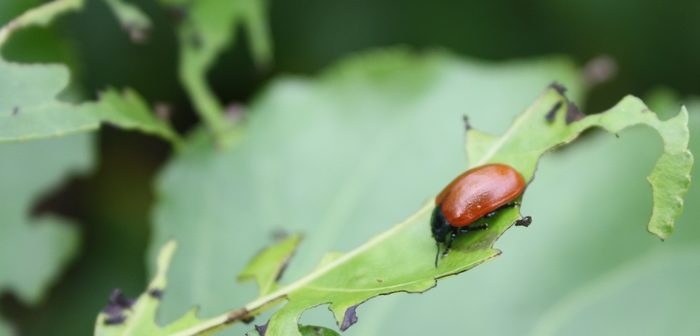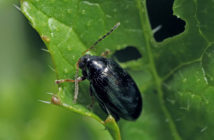Herbivorous insects are estimated to be responsible for destroying one-fifth of the world’s total crop production annually, but a new, natural approach to pesticides that turns insects’ taste and smell preferences against them could help reduce this toll.
‘Taste-based feeding traps using natural products could be an eco-friendly, cost-efficient and sustainable alternative to synthetic insecticides in the future,’ said Dr Stefan Pentzold from the Max Planck Institute for Chemical Ecology in Jena, Germany.
He and his team are looking at which taste receptors the poplar leaf beetle uses to recognise its favourite food — the leaves of poplar trees — and how this affects its feeding behaviour, as part of the EU-funded ChemoSense project. The answers could lead to novel pest management strategies in forestry and agriculture.
‘Despite their essential role in the insects’ food intake, survival and reproduction, relatively little is known about taste receptors, especially in beetles,’ he said. ‘This is surprising given their importance as agricultural and forestry pests, their global distribution and huge species numbers as herbivorous insects.’
Insects, like all animals, have preferences for what food they like and can distinguish one taste from another. But how do they decide whether a plant is tasty or not?
‘This is quite complex and often depends on the plant’s chemical composition and whether an insect is a generalist — an insect feeding on many different plant species — or a specialist, who feeds on very few plant species,’ said Dr Pentzold.
For example, although poplar leaves actual deter many generalist insects because of their toxic and bitter-tasting substances, the specialist poplar leaf beetle finds these substances tasty and ingests them for self-defense against predators, says Dr Penztold.
Insects use their hair-covered legs, mouthparts and antennae to taste their food before eating. Through these taste hairs, insects can sense their preferred plants’ chemical make-up.
‘Tastant substances (any substance which stimulates the sense of taste) in the leaf can diffuse into the taste hairs through a pore and reach the taste receptors inside the insect,’ explained Dr Pentzold. ‘If the substance is recognised, a signal is transmitted to the insect’s brain where the final check takes place that tells the mouthpart’s muscles “eat me” or “don’t eat me”.’
However, some insects have taste buds in odd places, making this process even more complex. ‘We found that the poplar leaf beetle’s taste receptors are not only present in external organs but also in internal organs and tissues, such as the gut and haemolymph (the insect equivalent of blood),’ said Dr Pentzold. ‘It’ll be fascinating if these are acting as nutrient sensors, telling the insect “I’m hungry” or “I’m full”.’
In addition to taste, insects rely on smell to find food and mates, and avoid predators or even plants. One such plant is the medicinal desert plant Achillea fragrantissima, commonly known as lavender cotton.
Dr Osnat Malka, chief scientist of Israeli agritech company EdenShield, said:‘Many insects don’t like this desert plant, which has a very strong smell and natural toxic substances, and choose to go to other plants instead.’
EdenShield is developing a green alternative to pesticides based on extracts of the native plant found in the Judaean Desert. The hope is, this natural insect repellent helps farmers protect their crops against pests in greenhouses without damaging the environment or human health.




